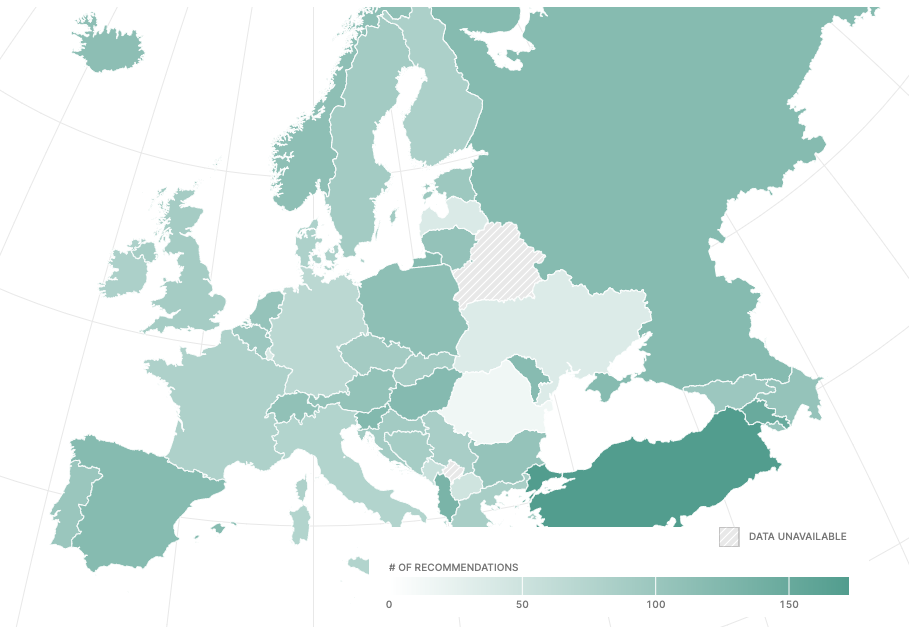For decades, the United Kingdom has received recommendations on how to improve its treatment of women by the United Nations and the European Court of Human Rights (ECtHR). In July 2022, the UK took a step forward and ratified the Istanbul Convention, an international treaty designed to prevent violence against women. Around the same time that the UK ratified the Istanbul Convention, it published new advice related to combating violence against women.
Despite these and other efforts, violence against women persists. In fact, the UK’s new guidelines on combating violence against women were accompanied by indicators showing the alarming prevalence of gender-based violence in the country .
Why, despite extensive efforts by the international community to improve women’s rights through treaties and recommendations, does gender-based violence and discrimination persist?
Despite the importance of international human rights institutions’ recommendations for the protection of human rights, the evidence of their effectiveness is relatively limited.
The answer, we suggest, lies with the nature of the recommendations themselves. Understanding the design of international human rights recommendations and compliance with them is important not only for scholars but also for practitioners working within the UN and regional human rights ecosystems, in which rulings and recommendations are the main ways international organizations seek to improve human rights practices.
The recommendations data gap
Despite the importance of international human rights institutions’ recommendations for the protection of human rights, the evidence of their effectiveness is relatively limited. One reason for this is the challenging task of measuring and evaluating recommendation-related data. The sheer scope of recommendations is daunting, as countries are essentially flooded with recommendations from UN treaty bodies, the Universal Periodic Review (UPR), and, in the case of European states, the ECtHR. Parsing through the recommendations and tracing states’ compliance with them is demanding and time-consuming, and neither international human rights institutions nor human rights practitioners generally have the bandwidth to do so amidst their other work.
The newly-launched Women’s Rights Recommendations and Compliance Explorer (WRRCE) helps to meet this critical data and analytical need. It provides an inside look into the types of recommendations countries receive about women’s rights, the quality of those recommendations, and the steps states take toward compliance. These new data provide scholars and practitioners with an important tool to understand the landscape of women’s rights recommendations and compliance across Europe. Users can explore recommendations by country, across institutions, and over time, as well as by different features of the recommendations such as the level of precision, type of required human rights action, and compliance status.
Why the WRRCE and understanding human rights recommendations matters
The recommendations that international human rights institutions hand down to states represent one of the main ways in which these international institutions can affect human rights change long after ratification. These recommendations are particularly important for protecting women globally as many countries have retracted women’s rights in recent years. For example, in 2020, Poland’s Constitutional Tribunal banned abortions except in instances of fetal abnormalities. This resulted in more than 1,000 women turning to the ECtHR for recourse, and while these cases remain pending, they will generate important recommendations with the potential to impact protections of women’s rights in Poland. For human rights practitioners to be able to leverage these recommendations most effectively, they need nuanced data about the types of women’s rights recommendations that states receive and how and why they comply with them.
Information on the recommendation process can help inform key practices. For example, it can help those drafting the recommendations understand the conditions under which more specific demands are likely to produce more compliance or when more open-ended recommendations are likely to spur human rights action. These data can help answer practitioners’ questions about how domestic stakeholders delegate responsibility for compliance and the opportunities for impactful civil society involvement throughout the compliance process. By informing practice, these data can have a key impact on compliance with recommendations, which can change countries’ human rights outcomes.
Previewing the WRRCE
The WRRCE maps recommendations from the European Court of Human Rights, the United Nation’s Universal Periodic Review, and the UN Committee on the Elimination of Discrimination Against Women on two issues—violence against women and women’s economic rights —from 2006 to 2017 across 47 European states. Taken together, this accounts for nearly 4,000 recommendations that countries need to consider, prioritize, and implement.
Practitioners and scholars alike might be interested in examining the relationship between what international institutions ask of states, how they ask it, and how the substance and design of recommendations impacts compliance. The WRRCE makes answering these questions possible. It identifies and traces different types of recommendations that international human rights institutions offer states, codes each recommendation based on the specificity of the demands and then allows users to connect those design options with compliance outcomes. Users can take a deep dive within one country or examine trends across institutions or over time.
The way forward
The human rights institutions charged with protecting human rights continuously evaluate the human rights conditions of their member states and communicate their findings through recommendations. Although critically important, these recommendations have long been understudied, in no small part because of challenges related to measuring recommendation quality and compliance. The WRRCE offers a new tool for evaluating human rights recommendations, better equipping both scholars and practitioners with data and insights into how, why, and under which conditions international human rights institutions can best be leveraged to protect human rights.

